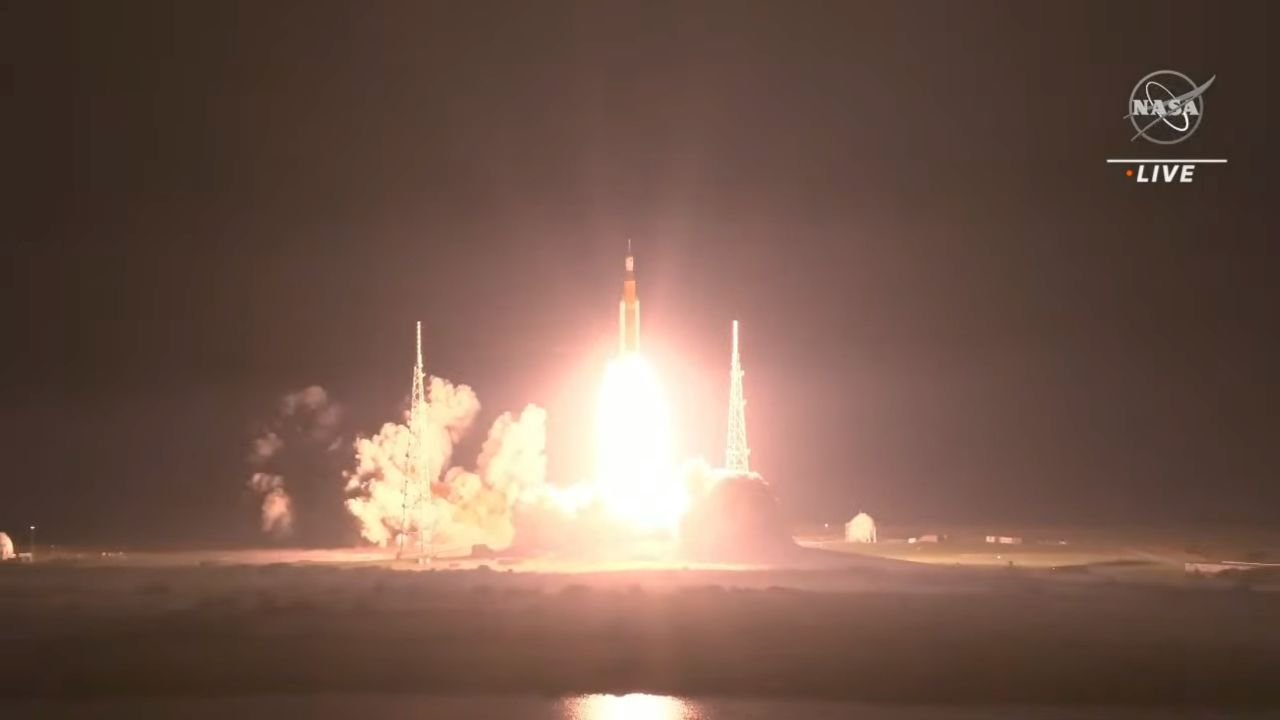(CNN) — task Artemis I The flight took off early this Wednesday morning after months of anticipation. This historic event launched a mission to send an unmanned spacecraft around the Moon, paving the way for NASA to return astronauts to the lunar surface for the first time in half a century.
The 322-foot-tall (98-meter-tall) Space Launch System rocket ignited its engines at 1:47 a.m. Miami time. It delivered 9 million pounds (4.1 million kilograms) of thrust from the launch pad in Florida and soared into the air, pulsing through the night sky.
On top of the rocket is the Orion spacecraft, a candy-shaped capsule that will separate after reaching space. Orion is designed to carry humans, but its passengers for this test mission are of the inanimate variety, including some dummies collecting vital data to help future live crews.
In just a few minutes, as the SLS expends its millions of pounds of fuel, parts of the rocket begin to break apart until Orion is left with a large engine. That engine will release two powerful burns over the next hour and a half, putting the spacecraft on course for the Moon. Then, after about two hours, the rocket motor will drop out, allowing Orion to fly freely for the rest of its journey.
According to NASA, Orion is expected to travel about 1.3 billion miles (2 million kilometers). After orbiting the Moon, Orion will complete its journey in about 25.5 days and return. The capsule is scheduled to splash down in the Pacific Ocean off the coast of San Diego on December 11, with rescue teams waiting nearby to bring it to safety.
Throughout the mission, NASA engineers will closely monitor the spacecraft’s performance. The team will assess whether Orion is performing as planned and is ready to support its first crewed mission to lunar orbit, currently scheduled for 2024.
The mission marks the first flight of the SLS rocket, with 15% more thrust than NASA’s Saturn V rocket that landed on the moon in the 20th century, more powerful to reach Earth orbit.
This is the first in what is expected to be a long series of increasingly difficult Artemis missions as NASA works toward its goal of establishing a permanent outpost on the moon. Artemis II will follow the same trajectory as Artemis I but carry astronauts on board. Artemis III, planned for later this decade, is expected to bring a woman and a person of color to the lunar surface for the first time.
Ahead of Wednesday’s launch, the mission team faced several hurdles, including technical problems with the lunar megarocket and two cyclones passing through the launch pad.
Feeding the SLS rocket supercooled liquid hydrogen has been a major problem, forcing NASA to halt previous liftoff attempts, but on Tuesday, despite the leak problems, the tanks were filled as the fuel supply was cut off hours before launch.
“On behalf of all the men and women of our great nation who worked to unite this team to make this day possible, and for the generation of Artemis, this is for you,” said Publishing Director Charlie Blackwell-Thompson. Artemis.



:max_bytes(150000):strip_icc()/WilliamLevy-9d1412ad3c01443498e58ed956f6242c.jpg)

